Prince Alfred and Australia’s first Royal Tour
by Mackenzie J. Gregory
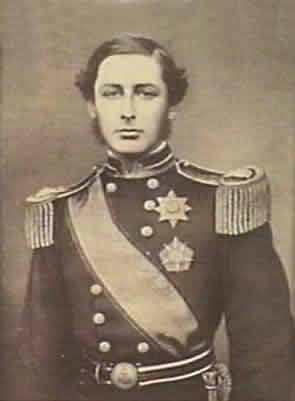 Prince Alfred, the Duke of Edinburgh (left), was noted for two significant events in the history of Australia. He was the first member of the Royal family to tour the colonies that became the Commonwealth of Australia and he was the first assassination target in Australia.
Prince Alfred, the Duke of Edinburgh (left), was noted for two significant events in the history of Australia. He was the first member of the Royal family to tour the colonies that became the Commonwealth of Australia and he was the first assassination target in Australia.
The second son and fourth child of Queen Victoria and Prince Albert of Saxe-Coburg-Gotha, Prince Alfred joined the Royal Navy and passed his midshipman’s examination in 1856. Appointed to HMS Euryalus, he was promoted to Lieutenant in 1863 and advanced rapidly to Captain by 1866, when he was also created the Duke of Edinburgh and Earl of Ulster and of Kent in the Queen’s Birthday Honours of May that year. In the same year he was appointed in command of the wooden steam frigate HMS Galatea, to prepare for a world tour in January 1867.
He departed Plymouth on 24 January 1867, calling in at Gibraltar and the Cape of Good Hope before crossing the Indian Ocean. He landed at Glenelg, South Australia, on 31 October, the first Australian port of call for a planned five-month visit that included Melbourne, Sydney, Brisbane, and Tasmania. In Victoria, a special royal train was made up for the occasion and the Duke travelled in it to provincial towns, such as Bendigo, Geelong, and Ballarat.
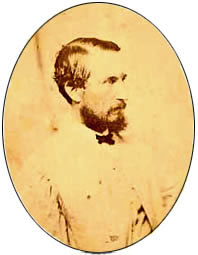 On 12 March 1868, while visiting Sydney for the second time, the Duke was enjoying an Australian picnic on the beachfront at Clontarf, when he was attacked by an Irishman, Henry James O’Farrell (right), flourishing a revolver. Shot in his back to the right of his spine, the Prince swiftly recovered, returned to his ship, and departed for the UK in early April.
On 12 March 1868, while visiting Sydney for the second time, the Duke was enjoying an Australian picnic on the beachfront at Clontarf, when he was attacked by an Irishman, Henry James O’Farrell (right), flourishing a revolver. Shot in his back to the right of his spine, the Prince swiftly recovered, returned to his ship, and departed for the UK in early April.
It was alleged that O’Farrell, who had a history of hospitalisations for mental illness, first claimed that he acted on instructions from a band of Melbourne Fenians. He later disputed that and, in a deathbed confession that Colonial Secretary Sir Henry Parkes initially attempted to suppress, wrote:
“I was never connected with any man or body of men who had for their object the taking of the life of the Duke of Edinburgh.
“Never was I in any other than an indirect manner connected with that organisation in Ireland and elsewhere which is known by the name of the Fenian organisation.
“I wish moreover distinctly to assert that there was not a human being in existence who had the slightest idea of the object I had in view when carrying into effect the death of the Duke of Edinburgh.
“I had no foundation for saying there was a Fenian association in NSW. From continually thinking and talking of what I may still be allowed to call the wrongs of Ireland, I became excited and filled with enthusiasm on the subject.
“And it was when under the influence of those feelings that I attempted to perpetrate the deed for which I am most justly called upon to suffer.
Found guilty of attempted murder, and despite the Prince’s recommendation that the sentence be reviewed by the Queen, O’Farrell was hanged at Darlinghurst gaol on 21 April, less than six weeks after the shooting. He was buried in the Catholic section of Rookwood cemetery.
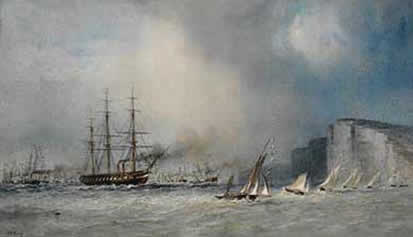
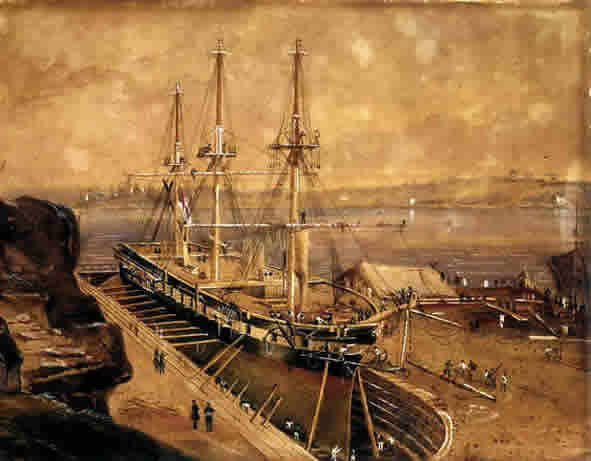
Influential citizens of Sydney met on the evening of 23 March 1868, 11 days after the assassination attempt, to vote for a memorial to be built “to raise a permanent and substantial monument in testimony of the heartfelt gratitude of the community at the recovery of HRH.” This led to a public subscription that paid for the Royal Prince Alfred Hospital’s construction. A similar movement contributed to the building of the Melbourne Alfred Hospital.
However, sectarianism and bigotry were never far from the political surface in Australia in those days. What followed became an example of how an astute politician could manipulate public hysteria and xenophobia for his own political benefit. Henry Parkes used the shooting to advance public support for his personal prejudice against the Irish and the Catholics. Anticipating obstruction from Irish elements in the police force, he swore in a small army of private detectives, including ex-convicts, to track down “Fenian conspirators”. None were ever found.
Queensland visit
In 1868, before the shooting, the western railway line reached Jondaryan in Queensland, one of the greatest achievements of the government of the time. Prince Alfred was taken there to open the new extension.
The visit was reported to be a disaster right from the start. The special train carrying the Prince and his retinue of dignitaries ran hours late, arriving at Jondaryan after dark, upsetting all the arrangements for the official welcome and opening celebrations.
According to John Eggleston, of the Jondaryan Woolshed Historical Museum, the following is attributed to a Reverend John Milner, who accompanied Prince Alfred on his Australian tour:
Because of the lateness of the arrival of the train, all the welcoming arrangements had to be reorganised, causing some two hours further delay.
The Duke was confined to a small room at the railway station with his attending staff, while the squatters and other gentlemen who had assembled to welcome the Duke, took possession of the vacant carriages and settled down to their pipes and conversation, it being unclear what the next move was to be. The Duke was highly amused by the oddness of the whole affair and asked, “What came we out to see?”
The Commodore went to see what was going on and found that preparations were being made for a dinner, as it was so late.
About 10 o’clock in the evening, dinner was announced, by which time everyone was afflicted with considerable hunger pains. Some 50 guests sat down with the Duke’s party in a large tent decorated with flags and flowers.
After the Governor had made the Royal toast, the manager of Jondaryan station, Mr Graham, made a very amusing speech, presenting the Duke with a very large damper that had been especially made on the station for him, as a gift from the station people.
The Duke, in accepting the damper, said that he could not possibly eat it all himself and received it as eaten.
At this point another gentleman proposed the health of His Excellency, the acting Governor. He took the opportunity of saying how desirous the squatters were that he should be confirmed in the appointment, appealing to the Duke to use his influence with the Queen for that purpose. At that point a voice desired him to sit down, but this request made him persevere the more, as he saw that the majority was definitely with him.
After the dinner was concluded, Mr Graham invited the Duke and his party to accompany him to the Jondaryan homestead, some two miles distant, where he offered to put the party up for the night.
However, an over-zealous government official insisted that the Duke should spend the night in the accommodation that had been arranged for him at the railway station.
So the remainder of the Duke’s party departed with Mr Graham for Jondaryan, leaving the Duke to the enjoyment of his dreary quarters.
The following morning, Mr Graham invited the Duke and his party to spend the day hunting, as there were plenty of kangaroos, emus and plain turkeys to be had on the Downs. The Duke being a keen sportsman, expressed his delight at the invitation, adding that it would help to loosen up his cramped muscles from the past night’s sleep.
However, the official organising the tour said the Duke’s schedule could not allow him the time to do that, as so much time had been lost on the previous day.
Prince Alfred was not impressed with his visit to Jondaryan, for on his return to England, he is reported as having told his mother, Queen Victoria, “In New South Wales they shot at me, in Victoria they mobbed me, but in Queensland they sent me to Jondaryan and inflicted me with over-zealous officials.”
Marriage
On 23 January 1874, Prince Alfred married Grand Duchess Marie Alexandrovna of Russia, second daughter of Tsar Alexander. They had four daughters and one son, Prince Alfred Alexander.
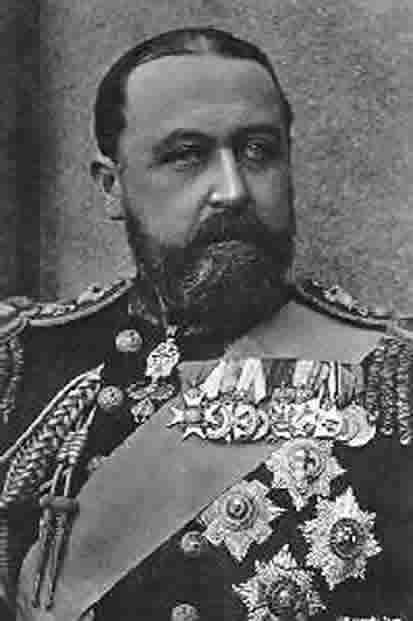
Prince Alfred senior remained an active and highly successful naval officer. He served with distinction in many appointments, promoted RADM in 1878 and ultimately FADM 1893.
When the Prince’s uncle Ernst died in August 1893, Alfred succeeded to the Duchy of Saxe-Coburg-Gotha. At first he was regarded with a degree of coldness as a foreigner, but by the time of his death he had essentially won over his subjects.
Prince Alfred Alexander, the much indulged only son and heir to the Duchy, became entangled in a scandal involving his mistress and shot himself in a suicide attempt in January 1889, during his parents’ 25th wedding anniversary celebrations. He briefly survived the shooting, but was banished to Meran, a spa in the Italian South Tyrol, ostensibly to recover. He died two weeks later on 6 February.
Prince Alfred senior died on 30 July 1900. He was buried in the ducal cemetery outside Coburg, Germany. A nephew, Prince Charles, succeeded him to the Duchy of Saxe-Coburg-Gotha.
